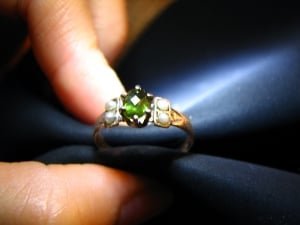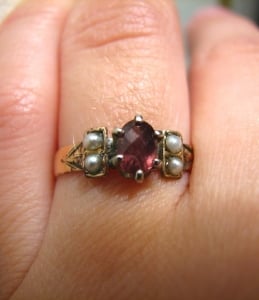tanzelf
Rough_Rock
- Joined
- Sep 11, 2012
- Messages
- 13
Hi, I have recently acquired an 1800's Victorian Alexandrite ring. The alex is confirmed Russian, natural, and has a strong 100% color change. I am completely in love with it, but I do not know how to value it. I have tried to extensively research Russian alexandrites but cannot find any pictures to compare because they are so rare. I own a few other natural alex's but they are Indian and Brazilian and the colors are so different from the Russian. I would really appreciate anyone's opinion on the color and what the value of the ring may be. The stone is not huge, it is a 6x4mm .53ct rose cut oval. I will post a few pictures to try to show the colors. Thank you in advance for your opinions.
This is just a quick pic I snapped as soon as I got home with it. I just used my keychain LED light and the background is the back of my mousepad. lol

This picture was taken under incandescent light. Not the best showing of the reddish color, but it will do. PS: Sorry for the 2 fibers in the photo. This was before its proper cleaning, it was quite dirty.

This is just a quick pic I snapped as soon as I got home with it. I just used my keychain LED light and the background is the back of my mousepad. lol

This picture was taken under incandescent light. Not the best showing of the reddish color, but it will do. PS: Sorry for the 2 fibers in the photo. This was before its proper cleaning, it was quite dirty.





300x240.png)